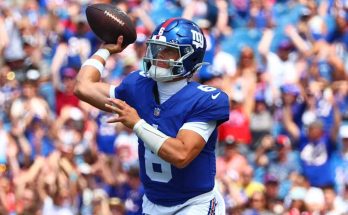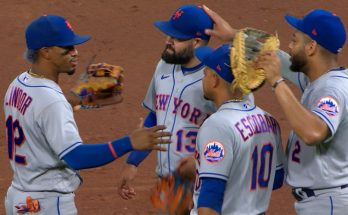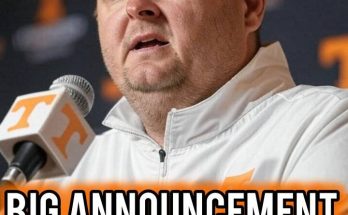Fresh off their thrilling and somewhat unexpected run to the 2025 NBA Finals, the Indiana Pacers enter the 2025–26 season in a peculiar state—balancing elation and disappointment in nearly equal measure. The highs of making it all the way to the championship series, overcoming favored opponents, and establishing themselves as legitimate contenders are now countered by a crushing blow: their leader and All-NBA point guard, Tyrese Haliburton, will miss the entire season due to a torn Achilles tendon sustained during offseason training. The loss of Haliburton is a seismic shift not only for the Pacers’ hopes in the upcoming season but also for their long-term development timeline. Yet, in typical Indiana fashion, this team remains undeterred, quietly confident and poised to take the challenge head-on.
Haliburton was the heartbeat of the Pacers’ offense. His vision, flair, and pace dictated everything Indiana did. He led the league in assists for most of the 2024–25 season and was often the smartest player on the court. His absence will be glaring, not only because of his 20-point, 10-assist averages but because of the intangibles—his ability to calm a frantic possession, his knack for creating shots for others when things broke down, and his vocal leadership. Last year’s playoff run was largely built around Haliburton’s ability to control the tempo, execute in clutch moments, and inspire belief in a young roster. Losing that kind of leader is akin to a symphony missing its conductor.
Still, the franchise is determined not to let one injury derail the momentum it has built. General Manager Chad Buchanan and Head Coach Rick Carlisle face an immense challenge but also a unique opportunity. In Haliburton’s absence, they will need to get creative, find new combinations, and further develop the rest of the roster. This is no longer a team merely happy to make the playoffs—they tasted the Finals, and anything short of another deep postseason run will feel like regression.
Fortunately for Indiana, the rest of their young core is still intact and hungry. Bennedict Mathurin, now entering his third season, is expected to take on a much larger role. Mathurin showed flashes of brilliance in the 2025 playoffs, particularly with his fearlessness attacking the rim and his improving midrange game. Without Haliburton, the ball will be in his hands more often, and the coaching staff believes he’s ready for that responsibility. Though not a natural playmaker, Mathurin has worked hard over the summer to improve his court vision and handle, knowing full well the team will need someone to absorb some of the creative duties that Haliburton carried so effortlessly.
Then there’s Andrew Nembhard, a cerebral guard whose steady play has already earned him the trust of Carlisle. Nembhard started several games last season when Haliburton was sidelined and proved himself capable of running the offense, albeit in a less explosive way. His decision-making, perimeter defense, and ability to hit open shots will be crucial to maintaining structure. While he won’t replicate Haliburton’s flash, Nembhard is the type of player who can quietly keep the machine running.
Indiana’s frontcourt also offers reason for optimism. Myles Turner, the longest-tenured Pacer, continues to be a defensive anchor and an underrated offensive contributor. His ability to space the floor as a stretch five while protecting the rim gives Indiana flexibility on both ends. Turner’s leadership will become even more critical this season, especially with Haliburton out of the locker room and off the court. He’s never been a vocal leader in the traditional sense, but his experience and consistency will be invaluable.
Next to Turner is Jarace Walker, who has evolved into one of the league’s most intriguing young forwards. After a somewhat uneven rookie season, Walker blossomed during the playoff run, showcasing his versatility, defensive tenacity, and improved offensive skill set. His ability to guard multiple positions, handle the ball in transition, and knock down corner threes makes him a key cog in Indiana’s system. The coaching staff plans to use Walker as a point-forward in certain lineups to help ease the playmaking burden, giving the Pacers another way to generate offense in Haliburton’s absence.
Another exciting piece is Obi Toppin, who found new life with the Pacers after a quiet start to his NBA career in New York. Toppin thrived in Indiana’s fast-paced system last season, routinely finishing fast breaks and attacking closeouts with aggression. His chemistry with Haliburton was undeniable, but even without the star guard, Toppin’s athleticism and energy should remain impactful. The hope is that Toppin can continue to stretch his game beyond just highlight-reel dunks and develop more consistency as a spot-up shooter and cutter in halfcourt sets.
Off the bench, the Pacers will look to veterans like Bruce Brown and T.J. McConnell for leadership and stability. Brown’s championship experience with the Nuggets and defensive versatility provide a valuable counterbalance to the youth in the rotation. Meanwhile, McConnell’s scrappy play and relentless hustle have made him a fan favorite and an emotional leader. Neither is expected to play huge minutes, but both will be counted on to guide the second unit and provide situational impact.
One of the biggest questions entering the season is whether Indiana will make a move to replace Haliburton’s production. While the front office has expressed confidence in their internal options, the trade market may offer opportunities. Rumors have linked the Pacers to various veteran guards who could help bridge the gap—names like Malcolm Brogdon, Terry Rozier, or even D’Angelo Russell have surfaced in speculative discussions. Any trade, however, would have to align with the team’s long-term vision. The Pacers aren’t looking to mortgage their future for a short-term patch; they want someone who can contribute now and still fit alongside Haliburton when he returns.
Carlisle will also need to make some stylistic adjustments. The team’s identity last year revolved around pace and space, with Haliburton orchestrating a top-five offense. Without him, the Pacers may slow things down slightly, relying more on halfcourt execution and defense. There will be growing pains—the ball might stick more, turnovers could rise, and the late-game poise that Haliburton provided will be missed. But there is a belief within the organization that this challenge will force the team to become more well-rounded and less reliant on any one player.
On the defensive end, Indiana took meaningful steps forward last season and hopes to continue that trajectory. They finished 14th in defensive rating—an improvement from years past—but still have room to grow. Walker, Turner, Brown, and Nembhard give the Pacers a solid defensive spine, and Carlisle has emphasized a more switchable, aggressive scheme this offseason. If the defense can inch closer to the top ten, it may help compensate for a potential dip in offensive efficiency.
In many ways, this season is a test of the Pacers’ culture. It’s easy to build momentum when things go well, when your star is healthy, and the path is clear. But adversity reveals the foundation of an organization. How will the young players respond to added responsibility? Will the coaching staff find new ways to innovate without their offensive engine? Can the team maintain its identity, chemistry, and resilience without its most important piece?
There’s also a broader question of expectation. After last year’s Finals appearance, the bar has been raised. Fans in Indianapolis, who waited more than two decades for a return to the NBA’s biggest stage, now expect this group to remain competitive. Yet, realistic observers understand that losing a player of Haliburton’s caliber inevitably lowers the ceiling. This season may not be about chasing a championship but rather about discovering how strong the supporting cast truly is and which players are ready to take that next step.
In the long view, Haliburton’s injury doesn’t change Indiana’s trajectory as a rising force in the Eastern Conference. If anything, it adds another layer to their journey—one filled with adversity, growth, and resilience. The core is still young, the system is strong, and the leadership from the front office to the coaching staff is steady. When Haliburton returns, presumably in time for the 2026–27 campaign, the Pacers hope to be an even deeper and more complete team, forged in the fire of a difficult but ultimately rewarding season.
For now, though, the road ahead is uncertain. There will be setbacks, moments of frustration, and growing pains. But there will also be opportunities—for Mathurin to become a star, for Walker to solidify his two-way impact, and for the team to prove that its success isn’t tied to one player alone. The 2025–26 Indiana Pacers may not mirror the explosive, electrifying squad from last season, but they still carry the same DNA: tough, unselfish, and unafraid of the challenge in front of them.



